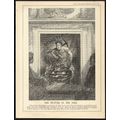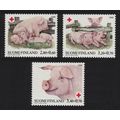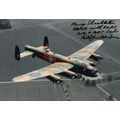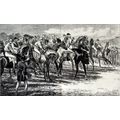Stubbs, George - A Kangaroo - art postcard
- Condition : Used
- Dispatch : 2 Days
- Brand : None
- ID# : 137603831
- Quantity : 1 item
- Views : 254
- Location : United Kingdom

- Seller : justthebook (+1703)
- Barcode : None
- Start : Tue 10 Mar 2015 00:31:51 (BST)
- Close : Run Until Sold
- Remain : Run Until Sold
More Listings from This Seller view all
Seller's Description
- Art Postcard
- Work of art title: A Kangaroo
- Artist (if known): George Stubbs (1724-1806)
- Media or other details: painting
- Publisher / Gallery: Parham Hall, Sussex
- Postally used: no
- Stamp & postmark details (if relevant): na
- Size: modern
- Notes & condition details:
NOTES:
Size: 'Modern' is usually around 6in x 4in / 'Old Standard' is usually around 5 1/2in x 3 1/2in. Larger sizes mentioned, but if you need to know the exact size please ask.
All postcards are not totally new and are pre-owned. It's inevitable that older cards may show signs of ageing and use, particularly sent through the post. Any faults other than normal ageing are noted.
Stock No.: A531
------------------------------------------------
Postage & Packing:
Postage and packing charge should be showing for your location (contact if not sure).
No additional charges for more than one postcard. You can buy as many postcards from me as you like and you will just pay the fee above once. Please wait for combined invoice. (If buying postcards with other things such as books, please contact or wait for invoice before paying).
Payment Methods:
UK - PayPal, Cheque (from UK bank) or postal order
Outside UK: PayPal ONLY (unless otherwise stated) please. NO non-UK currency checks or money orders (sorry).
NOTE: All postcards are sent in brand new stiffened envelopes which I have bought for the task. These are specially made to protect postcards and you may be able to re-use them. In addition there are other costs to sending so the above charge is not just for the stamp!
I will give a full refund if you are not fully satisfied with the postcard.
----------------------------------------------
Text from the free encyclopedia WIKIPEDIA may appear below to give a little background information:
*************
The Kongouro from New Holland is an oil painting by George Stubbs. Depicting a kangaroo, it is the first depiction of an Australian animal in Western Art, along with a painting of a dingo—Portrait of a Large Dog—by George Stubbs. It is part of the collection of the National Maritime Museum in Greenwich, London.[1] The work was commissioned by Joseph Banks and based on the inflated skin of an animal he had collected from the east coast of Australia in 1770 during Lieutenant James Cook's first voyage of discovery.[2] It depicts the animal sitting on a rock and looking over its shoulder with a backdrop of trees and mountains. The two were the only two paintings that Stubbs did not draw from a live subject.[2]
It was first exhibited by the Society of Artists in London in 1773 together with his painting of the dingo, Portrait of a Large Dog.[2] Subsequent exhibitions were held at the Walker Art Gallery in Liverpool in 1951 and the Whitechapel Art Gallery in 1957.[2] The painting has also been on view in recent years at Palham House during public openings.[2]
In 2012, The Kongouro from New Holland and Portrait of a Large Dog were purchased together at auction for 9.3 million Australian dollars by an undisclosed buyer.[3] An application to take them to Australia was refused by the Department of Culture on the grounds of their national importance. Sir David Attenborough, who had led a campaign to keep both portraits in Britain, remarked that it was ""exciting news that these two pictures, so important in the history of zoological discovery, are to remain where they were commissioned and painted"".[3] The National Gallery of Australia had expressed a strong desire to purchase the portraits.[3] In November 2013 it was announced that a £1.5million donation from the Eyal Ofer Family Foundation will enable the National Maritime Museum in Greenwich, London to acquire the two paintings.[4]
George Stubbs (25 August 1724 – 10 July 1806) was an English painter, best known for his paintings of horses.
Stubbs was born in Liverpool, the son of a currier and leather merchant. Information on his life up to age thirty-five is sparse, relying almost entirely on notes made by fellow artist Ozias Humphry towards the end of Stubbs's life. Stubbs worked at his father's trade until he was 15 or 16.
After his father's death in 1741, Stubbs was briefly apprenticed to a Lancashire painter and engraver named Hamlet Winstanley, but he soon left as he objected to the work of copying to which he was set. Thereafter as an artist he was self-taught. In the 1740s he worked as a portrait painter in the North of England and from about 1745 to 1751 he studied human anatomy at York County Hospital. He had had a passion for anatomy from his childhood, and one of his earliest surviving works is a set of illustrations for a textbook on midwifery which was published in 1751.
In 1754 Stubbs visited Italy.[1] Forty years later he told Ozias Humphry that his motive for going to Italy was, ""to convince himself that nature was and is always superior to art whether Greek or Roman, and having renewed this conviction he immediately resolved upon returning home"". In 1756 he rented a farmhouse in the village ofHorkstow, Lincolnshire, and spent 18 months dissecting horses, assisted by his common-law wife, Mary Spencer.[2] He moved to London in about 1759 and in 1766 published The anatomy of the Horse. The original drawings are now in the collection of the Royal Academy.
Even before his book was published, Stubbs's drawings were seen by leading aristocratic patrons, who recognised that his work was more accurate than that of earlier horse painters such as James Seymour, Peter Tillemans and John Wootton. In 1759 the 3rd Duke of Richmond commissioned three large pictures from him, and his career was soon secure. By 1763 he had produced works for several more dukes and other lords and was able to buy a house in Marylebone, a fashionable part of London, where he lived for the rest of his life.
Stubbs also painted historical pictures, but these are much less well regarded. From the late 1760s he produced some work on enamel. In the 1770s Josiah Wedgwooddeveloped a new and larger type of enamel panel at Stubbs's request. Stubbs hoped to achieve commercial success with his paintings in enamel, but the venture left him in debt.[4] Also in the 1770s he painted single portraits of dogs for the first time, while also receiving an increasing number of commissions to paint hunts with their packs of hounds. He remained active into his old age. In the 1780s he produced a pastoral series called Haymakers and Reapers, and in the early 1790s he enjoyed the patronage of the Prince of Wales, whom he painted on horseback in 1791. His last project, begun in 1795, was A comparative anatomical exposition of the structure of the human body with that of a tiger and a common fowl, fifteen engravings from which appeared between 1804 and 1806. The project was left unfinished upon Stubbs's death at the age of 81 on 10 July 1806, in London.
Stubbs's son George Townly Stubbs was an engraver and printmaker.
The record price for a Stubbs painting was set by the sale at auction of Gimcrack on Newmarket Heath, with a Trainer, a Stable-Lad, and a Jockey (1765) at Christie's in London in July 2011 for £22.4 million. It was sold by the British Woolavington Collection of sporting art; the buyer was unidentified. [5]
The British Royal Collection holds 16 paintings by Stubbs.[6]
Two paintings by Stubbs were bought by the National Maritime Museum in Greenwich, London after a public appeal to raise the £1.5 million required.[7] The two paintings, The Kongouro from New Holland and Portrait of a Large Dog were both painted in 1772.[7] Depicting a kangaroo and a dingo respectively, they are the first depictions of Australian animals in Western art.[7]
type=printed postcards
theme=artists signed
sub-theme=art
number of items=single
period=1945 - present
postage condition=unposted
Listing Information
| Listing Type | Gallery Listing |
| Listing ID# | 137603831 |
| Start Time | Tue 10 Mar 2015 00:31:51 (BST) |
| Close Time | Run Until Sold |
| Starting Bid | Fixed Price (no bidding) |
| Item Condition | Used |
| Bids | 0 |
| Views | 254 |
| Dispatch Time | 2 Days |
| Quantity | 1 |
| Location | United Kingdom |
| Auto Extend | No |




 for 1 item(s)
for 1 item(s)
















